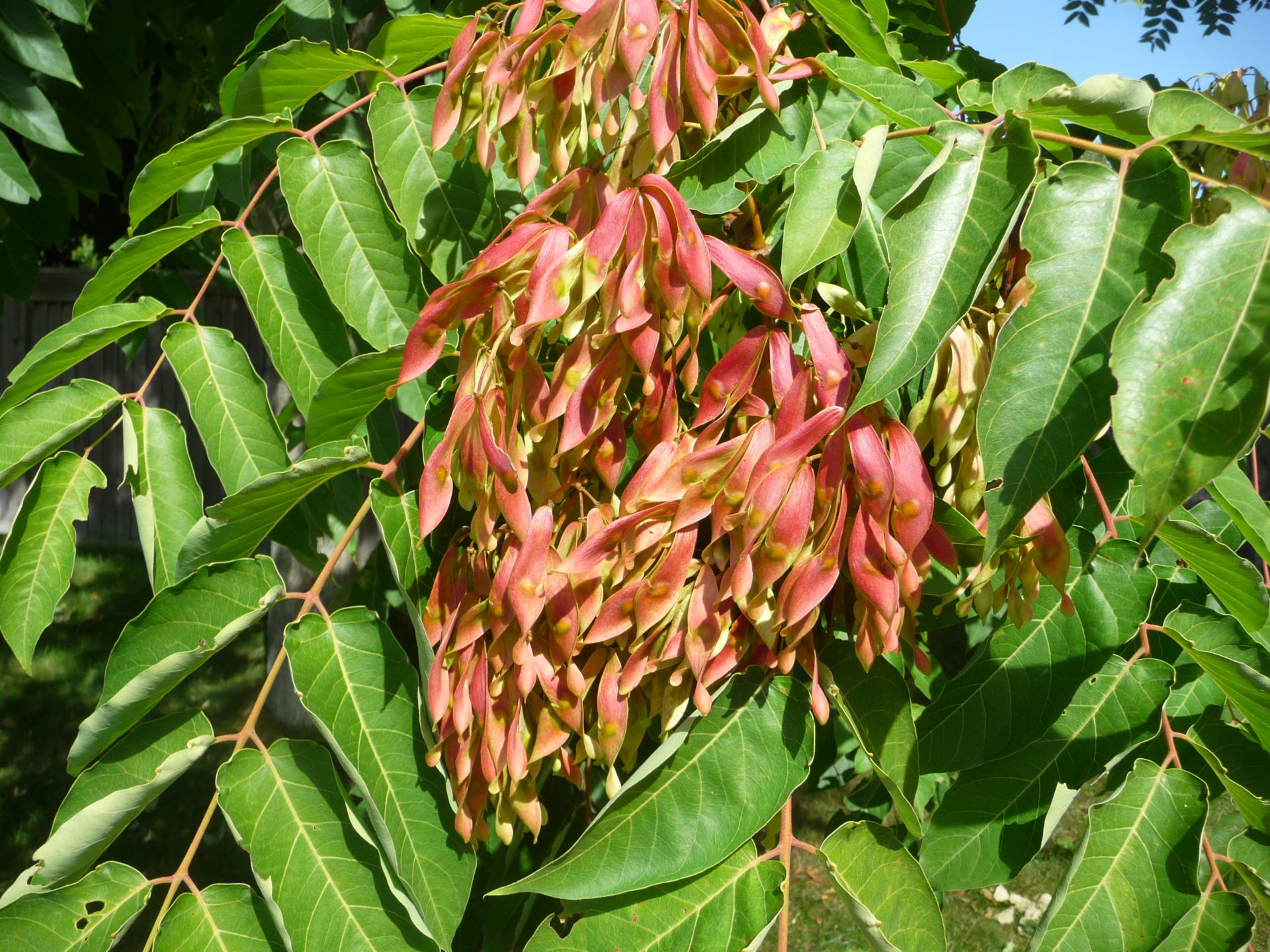Weed Trees
Garden Clippings for September 7, 2019
When we think of weeds, we think of dandelions, purslane, thistles and ragweed. Less common are the likes of poison ivy, burdock, black medic and queen Anne’s lace. But it is time we recognise certain trees as weeds as well.
Top of the list is Tree of Heaven (Ailanthus altissima), which at first blush is an innocent looking tree. South of the border, Tree of Heaven is on the invasive species list because its aggressive growth habit threatens native species. A single tree can quickly develop into a dense thicket of growth because the tree grows like raspberries, producing new shoots from roots. Roots emit a chemical that protects itself while harming the growth of surrounding plants.
At university we were taught that Tree of Heaven is the only tree that would grow between the pop bottles and sidewalk cracks of New York City. While visiting Hamilton last weekend, I noticed Tree of Heaven is also comfortable growing behind fast food joints and shawarma take-out shops.
Tree of Heaven begins growing in tight crevasses such as the gap between the air conditioner and the chimney. Within a few years its head can reach the eavestrough and its roots can damage drainage pipes and may lift sidewalks.
In the bush Tree of Heaven will slowly penetrate. When a thick woodlot has been clear cut to build a highway or pipeline, the tree can take advantage of the open space and may quickly fill the gap before wildflowers and desirable plants have a chance to grow.
Tree of Heaven originated in China. More than 2 centuries ago it was introduced to Europe as a desirable shade tree that grew fast and was tolerant of urban city conditions. It soon found its way to the Eastern United States and now grows almost everywhere in USA and the warmer parts of Canada.
Tree of Heaven is easily recognised by its smooth greyish brown bark. Leaves resemble Walnuts and are compound, 2 or 3 feet long, with about 2 dozen leaflets.
Tree of Heaven is dioecious, meaning there are male and female plants. Male leaves reportedly give off an offensive odour, especially when crushed.
Not all about Tree of Heaven is sinful. The tree is tall growing and provides quick shade, which is especially useful in busy urban conditions where soil is poor, air quality is questionable and other mature trees are scarce. Unfortunately, or fortunately, Tree of heaven is difficult to transplant. And despite its weaknesses, Tree of Heaven joins all trees in their contribution to the environment by purifying the air.
Tree of Heaven is an attractive tree with a lovely vase shape. Its large leaves are almost tropical-like. Seed clusters appearing in late summer are an attractive orange colour.


